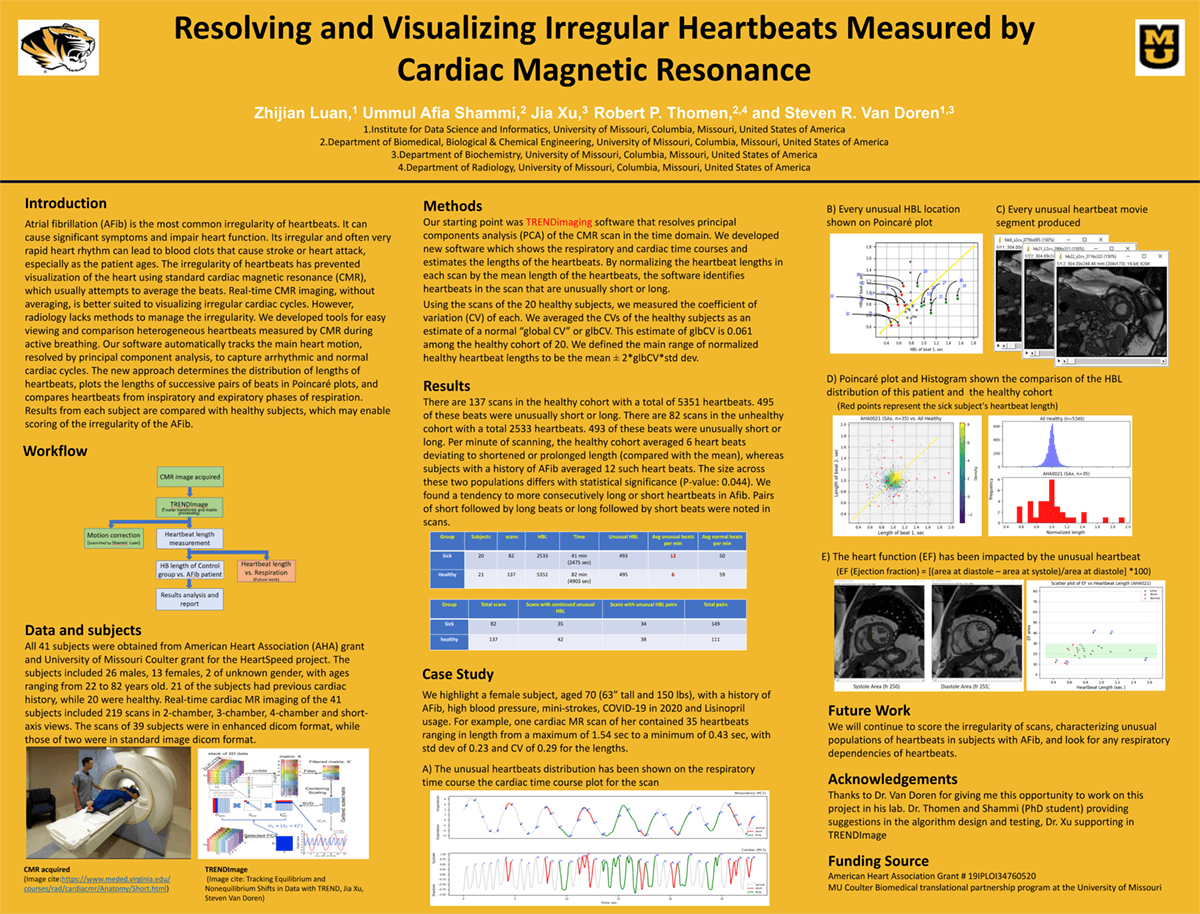
Introduction: Atrial fibrillation (AFib) is the most common irregularity of heartbeats. It can cause significant symptoms and impair heart function. Its irregular and often very rapid heart rhythm can lead to blood clots that cause stroke or heart attack, especially as the patient ages. The irregularity of heartbeats has prevented visualization of the heart using standard cardiac magnetic resonance (CMR), which usually attempts to average the beats. Real-time CMR imaging, without averaging, is better suited to visualizing irregular cardiac cycles. However, radiology lacks methods to manage the irregularity. We developed tools for easy viewing and compared heterogeneous heartbeats measured by CMR during active breathing.
Methods: Our software automatically tracks the main heart motion, resolved by principal component analysis, to capture arrhythmic and normal cardiac cycles. The new approach determines the distribution of lengths of heartbeats, plots the lengths of successive pairs of beats in Poincare plots, and compares heartbeats from inspiratory and expiratory phases of respiration. Results from each subject are compared with healthy subjects, which may enable scoring of the irregularity of the AFib.
Results: Per minute of scanning, the healthy cohort averaged 5 heartbeats deviating to shortened or prolonged length compared with the mean, whereas subjects with a history of AFib averaged 12 such heartbeats, a statistically significant difference (p<0.05). Specific examples will be shown.
Impact: Results from each subject are compared with healthy subjects, which may enable scoring of the irregularity of the AFib.
Organization: University of Missouri – Columbia
Zhijian L